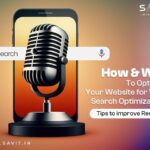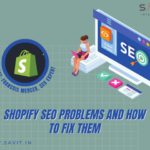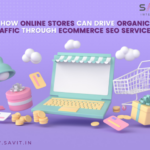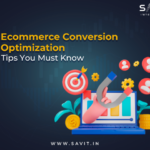As a business leader, you must prepare your organization for significant changes in data privacy regulations and browser policies. Third-party cookies, a long-time digital marketing and analytics staple, are on their way out. Apple’s Safari and Mozilla’s Firefox browsers block many third-party cookies by default. Google’s Chrome, the world’s most popular browser, will phase them out over the next two years.
You will require rethinking your data strategy and adopting new privacy-compliant technologies if you want to provide users personalized experiences. But with the right approach, you can balance user privacy and business growth in this new cookieless reality. Keep reading to learn the critical steps you must take to ensure compliance, improve customer experience, and drive better business outcomes. The path forward is challenging but navigable if you start preparing now.
Understanding Third-Party Cookies and Their Impact
To operate effectively in a cookie- less world, businesses must understand how third-party cookies work and how their removal will impact operations. External services, like advertising or analytics companies, place third-party cookies on websites to track users across the web. They allow these companies to build profiles of users’ browsing habits and interests to target ads or improve site experiences.
With significant browsers blocking third-party cookies, businesses will lose access to this data and the ability to track users similarly. Businesses will no longer have access to browsing data from third-party cookies to target ads based on users’ interests and behaviours across websites. They will have to rely more on contextually relevant ads or first-party data, and this will allow personalization without cookies. With limited cross-site tracking, businesses cannot track how users interact with their website or service across other unaffiliated websites with the business’s cookies. They will only see user interactions within their digital properties. Increased reliance on first-party data assists businesses to place more value on collecting and activating first-party data from their websites and apps to understand their users. They need to be transparent in collecting and using data while providing users with choice and control.
Why Businesses Need to Adapt to a Cookie-less World
As third-party cookies phase out, businesses must adapt to deliver personalized experiences through third-party cookie alternatives without relying on cross-site tracking. There are a few reasons why businesses need to gear up for this cookie-less world like Compliance with privacy regulations. Laws like GDPR, CCPA, and others aim to give users more control over their data. Eliminating third-party cookies is a step towards compliance and building consumer trust. Improved customer experience. When done right, privacy-focused personalization can enhance CX. Businesses can tailor experiences to individual needs and interests using first-party data and AI. This requires obtaining clear consent and providing value in exchange for data.
Through future-proofing operations, there will be cookie-less future with data privacy with marketing. Whether businesses are ready or not. Those that start preparing now will have a competitive advantage. They can build data strategies and partnerships to navigate the new landscape. Opportunity for innovation. Constraints often drive creativity. The cookie-less challenge allows businesses to rethink digital experiences innovatively, developing alternative solutions for personalization, attribution, and ad targeting.
Alternatives to Third-Party Cookies for Personalization
First-Party Data
Businesses can leverage first-party data collected from their websites and apps to personalize user experiences. Companies can gain valuable insights into customer interests and behaviours by analyzing user interactions, purchases, and profiles on their digital properties. First-party data is also more transparent since users directly provide the information to the business they interact with.
Contextual Targeting
Contextual targeting uses the content of a web page to determine which ads are most relevant to display. By analyzing the text, images, and other elements on the page, advertisers can match ads to users’ inferred interests. For example, fitness gear ads may appear on pages about exercise and health. Contextual targeting does not rely on personal information or tracking users across websites.
Cohort Targeting
Businesses can group users into “cohorts” based on attributes like demographics, locations, and behaviours. Ads and content are then tailored to the interests of each cohort. For example, a cohort of “frequent travellers” may see more ads for hotels and airfare. Cohort targeting achieves personalization without cookies at a group level rather than an individual level. It can be an effective alternative when less personal data is available.
Predictive Models
Machine learning models can analyze various data to predict user interests and preferences. Over time, the models get “smarter” at predicting what content and offers will be most engaging for each user. However, predictive models may require large amounts of data to function accurately. They can also reflect and amplify the biases in their training data. Businesses need to audit predictive models to ensure they do not discriminate unfairly.
While third-party cookies are on their way out, many options remain for businesses to provide personalized experiences responsibly. With the right balance of alternative targeting strategies, first-party data, and AI, companies can continue to thrive in an era of increased privacy. The key is using data judiciously and keeping the user experience in mind.
How to Build Audience Segments Without Relying on Cookies
Businesses need to get creative to build audience segments without relying on third-party cookies. Several strategies can help you better understand your customers and personalize their experiences.
Leverage First-Party Data
Focus on collecting and analyzing first-party data like customer information, purchase history, and website interactions as this will promote data privacy with marketing. Build comprehensive profiles of your customers by connecting data across channels to gain insights into their behaviours, preferences, and attributes.
Implement Consent Management
Obtaining user consent to collect and process personal data is vital. Implement a consent management platform to capture consent, manage consent revocation, and stay on top of changing regulations. Transparently explain how data will be used and allow customers to opt out of data collection and processing at any time.
Turn to Contextual Targeting
Contextual targeting uses the content of a web page to determine ad relevance and place ads rather than relying on personal information. For example, show ads for gardening supplies on pages about gardening. This approach respects user privacy but can still achieve a high level of personalization.
Employ Statistical Modeling
Use machine learning and predictive modelling to infer customer attributes and behaviours without accessing personal data. For example, analyze behavioural patterns to predict someone’s age range or interests. These models become more accurate over time as they are exposed to more data. However, there is still a risk of getting predictions wrong or making insensitive inferences.
Test and Iterate
With third-party cookies going away, audience segmentation and targeting strategies will require testing and optimization. Try different approaches, analyze the results, and make improvements over time. Look for strategies that balance personalization without cookies, privacy, and business goals. Be transparent in collecting and using data to build trust with your customers. Continuously adapting to support privacy regulations and deliver personalized experiences will be crucial for businesses in an increasingly cookie-less marketing world. Companies can thrive while respecting user privacy with the right strategies and commitment to responsible data use.
Conclusion
Today, ad tech companies are developing alternative solutions for targeting and attribution in a post-cookie world. Businesses should evaluate options to supplement their first-party data and on-site personalization efforts. New partnerships and integrations with the best ad tech provider like Savit Interactive will be essential to continue digital marketing success
Savit professionals proactively prepare for compliance changes, rethink personalization strategies, assist you in investing in first-party data collection, and offers cookie-less solutions. With suitable adjustments, Savit helps businesses thrive in this new era of privacy-focused digital marketing.








































